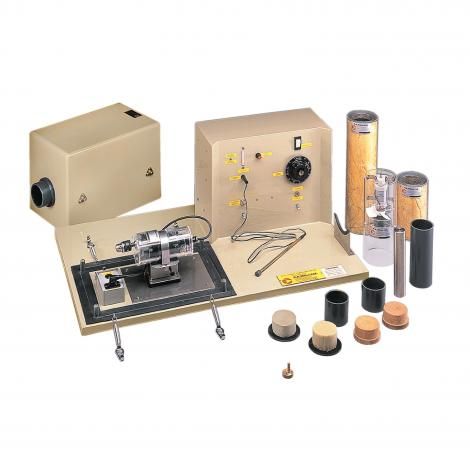The B600 consists of a glass reinforced plastic instrument panel and baseboard with controllable 240v AC and 12v DC power sources.
Either a 240v motor and gearbox with detachable eccentric rotor or a 12v DC fan may be fixed to resilient mounts attached to the baseboard. The mounts may be bypassed in order to demonstrate transmission of the noise through rigid mountings.
Variation of the supply voltage and motor speed allows investigation of the various modes of vibration of the motor and eccentric rotor and the effects of noise source frequency. The insertion of a large mass on the motor mounting further extends this investigation.
A rigid glass reinforced plastic enclosure may be placed over either of the noise sources both with and without an absorbent acoustic lining.
Openings in both ends of the box allow demonstration of the effects of small holes in the enclosure and the transmission of mechanical and aerodynamically generated noise along ducts.
Removable solid linings to the acoustically lined noise attenuation tubes graphically illustrate the effectiveness of this method of attenuation.
Two microphones are provided, one fixed adjacent to the noise source and the other mounted on a wand that may be moved around over the unit.
Each of the two microphones may be connected to dB A filter and amplifier that illuminates a bar display on the instrument panel. The bar display indicates relative loudness by progressively illuminating a larger number of bars for a louder noise. This allows relative loudness levels to be compared visually as well as subjectively.


